My investigations
into the
processes attending the ascent and emplacement of magmas into the crust
follow
naturally from my desire to understand the overall displacement history
of an
orogen. Not to mention Scott R. Paterson was my Ph.D. advisor and
most
discussions on geology with his research group would normally migrated
to that
topic at some point. Seriously, however, as a
The Alisitos Formation comprises the volcanic
host
rock to the Balbuena pluton. At distances greater than two
kilometers
from the margin of the Balbuena the Alisitos Fm. is characterized by a
strong
and consistent northwest strike of bedding as formed by tight to
isoclinal,
upright to slightly overturned (to the southwest) folds. However,
within
a few hundred to as much as two kilometers from the margin of the
pluton these
regionally consistent trends are deflected in opposite senses on
opposite sides
of the pluton. For example, to the northwest of the Balbuena an
overturned syncline is deflected from a regional trend of ~315 (or
135)
to ~65 (or 245), for a net counterclockwise rotation of ~70
degrees. Concomitant
with this deflection the fold is rotated into an upright orientation
and the
intensity of strain measured from these rocks increases dramatically
over that
in the surrounding Alisitos Fm. unaffected by the Balbuena. In a
recent
GSA abstract Wetmore
et al. (2001) argued that the dramatic and wide structural aureole
of the
Balbuena pluton resulted from the emplacement of the middle phase (II)
due to
the observation that the deflected host rocks were in concordance with
the
trend of the middle phase along the northwest side of the pluton and
because
the outer and inner phases cut discordantly across this aureole in
almost every
exposure. Furthermore, mechanically disintegrated (stoped) blocks
of the
Alisitos Fm. are volumetrically abundant (locally as great as 30-40%)
along the
northwestern and southeastern margins of the pluton.
Balbuena pluton of Baja California, Mexico
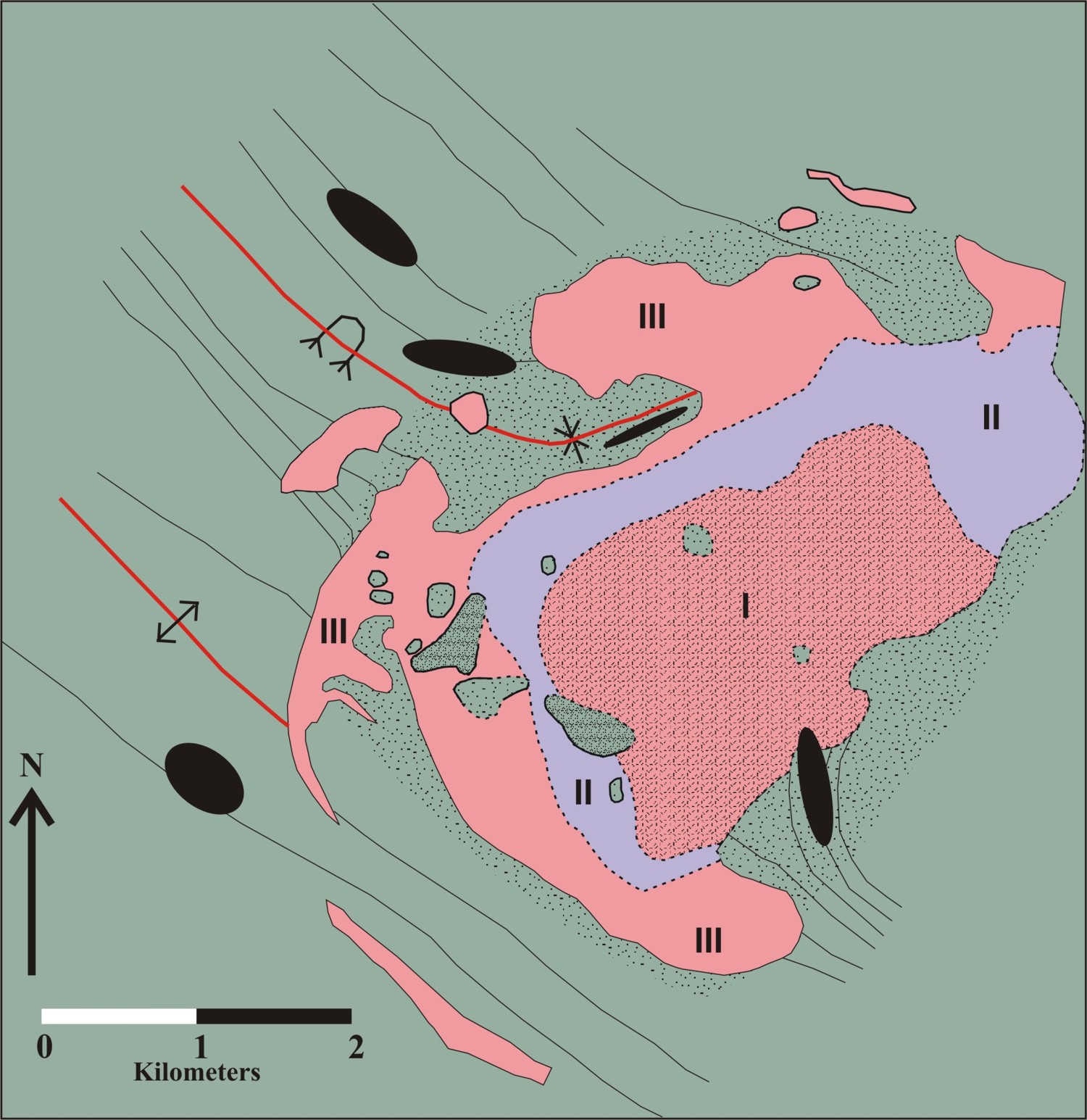
Geologic map of the Balbuena pluton. Red
lines are the axial traces
of folds, thin black lines are trend lines of bedding, and black
ellipses are
strain ellipses showing the YZ plane (uncorrected for primary fabric).
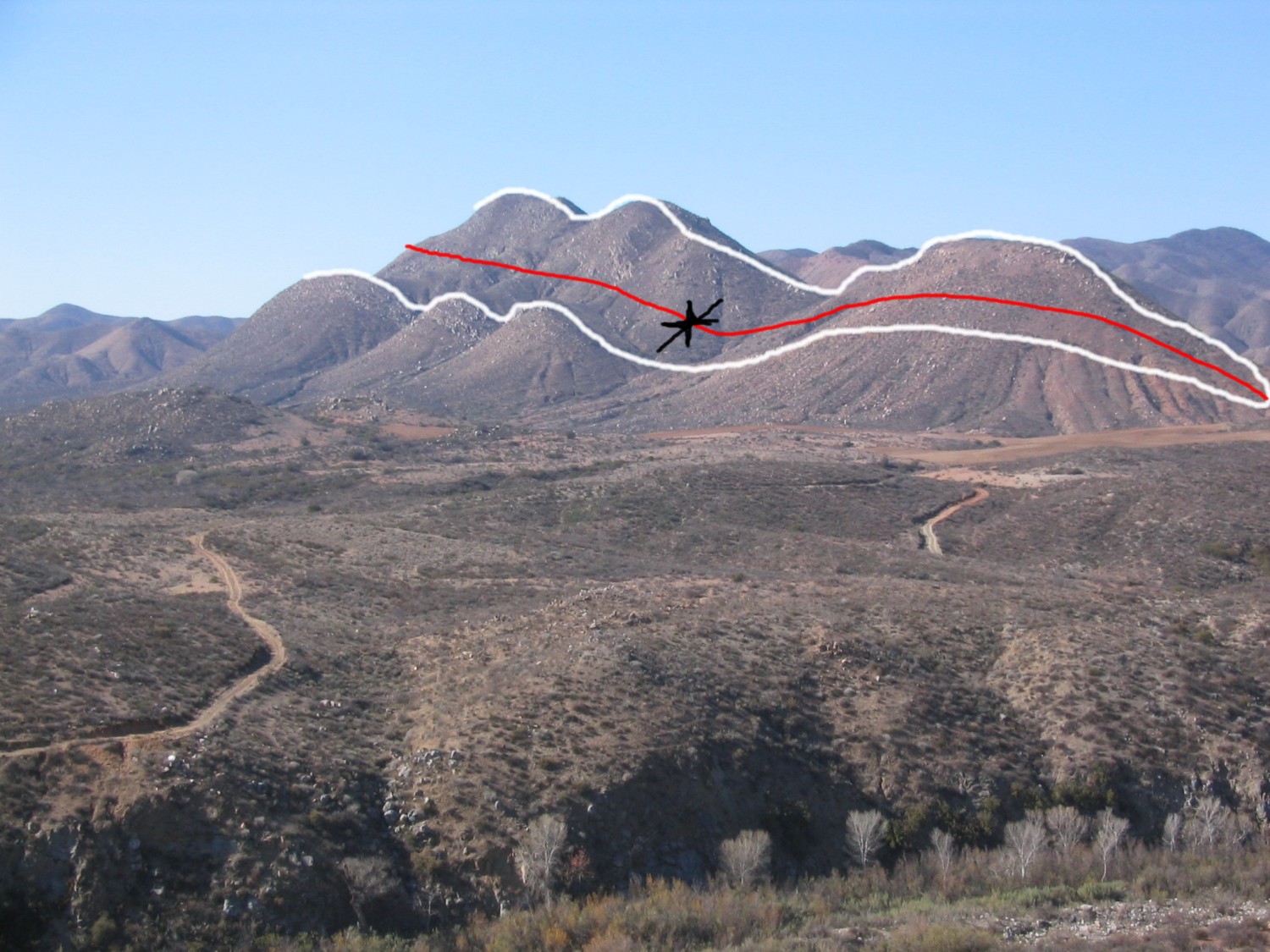
Preemplacement fold with axial surface rotated >80 degrees counterclockwise in the northwest margin of the Balbuena pluton
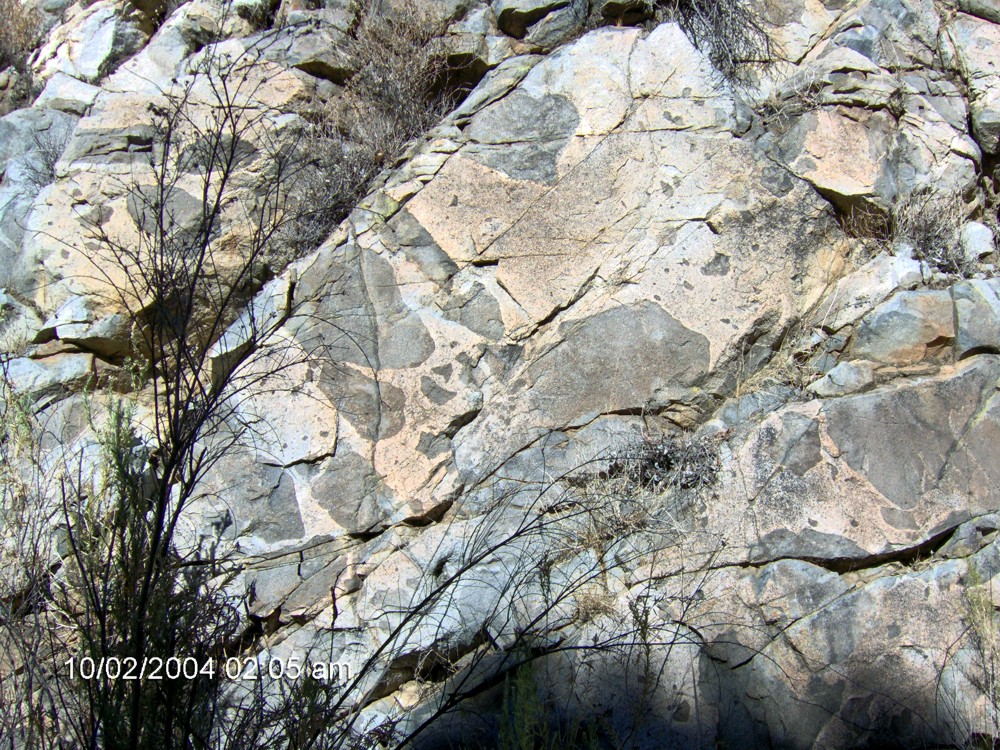
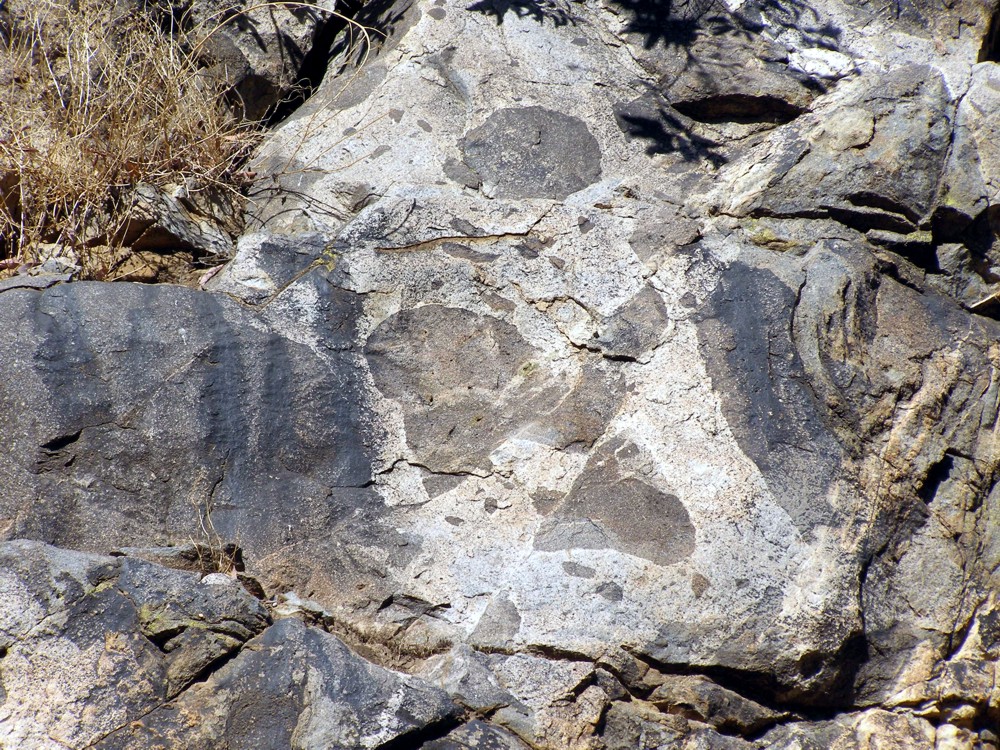
Mechanical disintegration of middle quartz diorite phase (II) within the outer tonalite phase (III). Note that most blocks have globular
margins and discreet fractures (many with clear offsets).
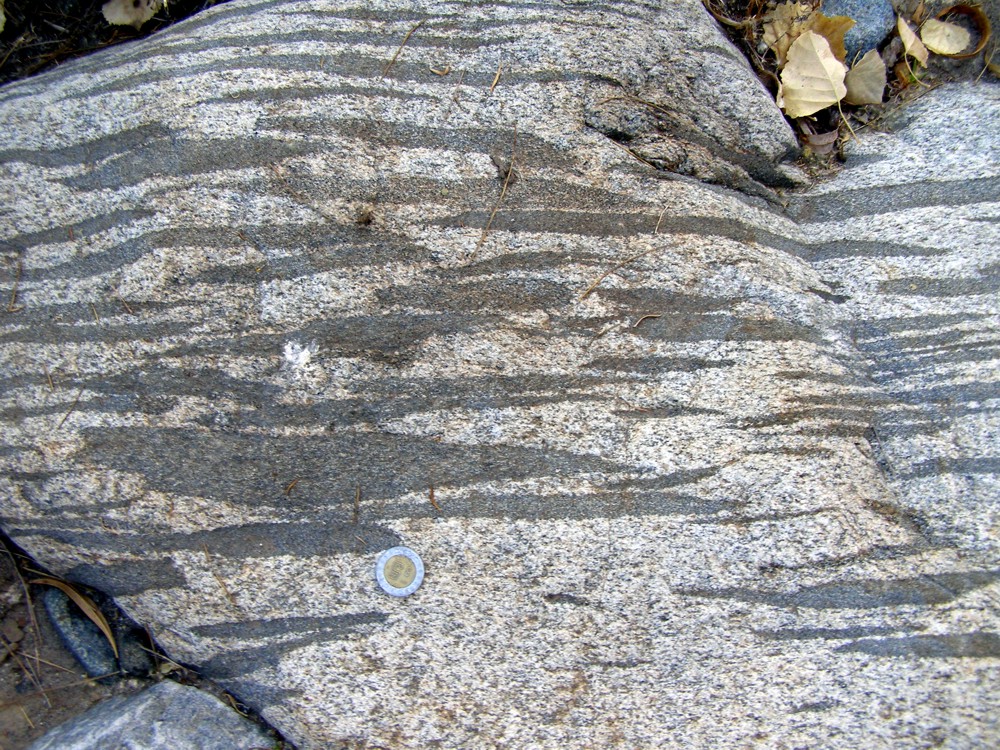
Elongate and flattened mafic enclaves